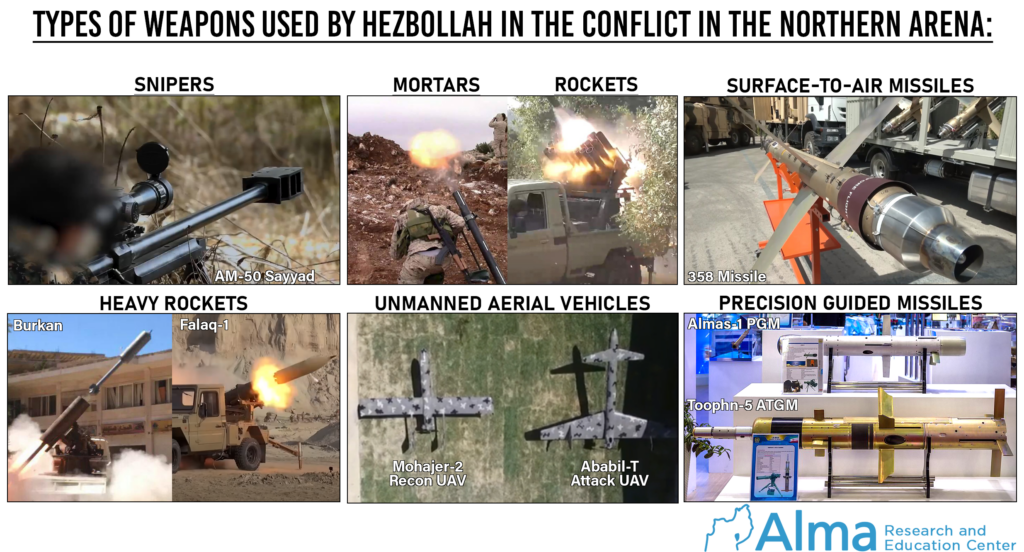Updated February 2024
According to Hezbollah’s reports, from October 8, 2023 until the beginning of February 2024, it carried out 1,083 attacks against Israel which included various types of weapons, including rockets, anti-tank missiles, UAVs, mortars, and anti-aircraft missiles. At least a third of the weapons fired fell in Lebanese territory, endangering the Lebanese population living in southern Lebanon. It should be noted that Hezbollah also fired sniper rifles at cameras along the border.
Following is a brief overview of the various types of munitions used by Hezbollah to date:
Burkan Rockets:
The Burkan is a rocket with a range of up to 10 km. The Burkan stands out for its very heavy warhead, which can be between 100 – 500 kg of explosives, that can cause extensive destruction within a radius of 150 meters from the point of impact.
The Burkan rocket is launched from small trucks or from a ground launcher. The price of each rocket ranges from $300 to $400. It is an inexpensive weapon with extensive effectiveness. We estimate that today Hezbollah has an arsenal of a few thousand.
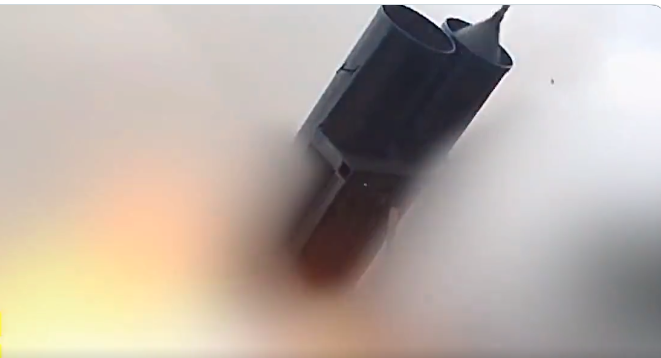

Above: the Burkan rocket
The Falk Rocket – 1:
A short-range rocket (up to 10 kilometers) launched from vehicles. Diameter 240 mm. Warhead weighing 50 kilograms.
Grad Rockets:
Hezbollah uses Grad rockets with a range of up to 45 km. The Grad 122mm rocket is capable of carrying up to 40 kg of explosives. The simplicity of its launch, its swift operation, the versatility in the number of rockets launched simultaneously, and the relative accuracy of the rocket, make the Grad rocket a common and effective weapon. Hezbollah has an arsenal of tens of thousands of this type of rockets. These rockets have different models and types of launchers (multi-barrel, single-barreled, ground-based, and on vehicles).
UAVs (Suicide UAVs):
In the current conflict, for the first time, Hezbollah began to use suicide UAVs against Israel. We estimate that Hezbollah has over 2,000 UAVs (in addition to drones) of all types (loitering suicide, attacking, intelligence).
The UAVs are also self-manufactured and supplied to Hezbollah by the Iranians. The self-produced models are based on the Iranian models.
Throughout the conflict, we also saw that Hezbollah operated Chinese-made intelligence-gathering UAVs that could be ordered online (costing $3000-3500).
So far, Hezbollah has used self-manufactured Merced-1 suicide UAVs (based on the Iranian Ababil T). It is a UAV with an attack range of 120 km, a speed of about 200 mph, a carrying capacity of up to 40 kg of explosives, and a flight capability at an altitude of up to 3000 meters.
Mortars:
Hezbollah operatives have so far fired mortar shells mainly to short ranges and they mainly use light and medium mortars. The advantage: Fast and relatively simple operation:
Light mortars – up to 60 mm in diameter, used for ranges of hundreds of meters and up to a few kilometers (2-3 km).
Medium mortars – diameter over 80 mm (80 / 81 / 120 mm) designed for a range of up to about 10 km.
It should be noted that Hezbollah also has heavy mortars (over 160 mm) with a range of over 10 km.
Hezbollah operative Hasin Ali Bajuk from Ayta al-Sha'ab. Killed on October 24 in South Lebanon. In the video you can see him firing a 120mm mortar, and in the picture you can see equipment left on him after he was killed; parts of a watch, money and military identification tags… pic.twitter.com/DlvJf0anHq
— Israel-Alma (@Israel_Alma_org) November 26, 2023
Anti-tank:
In addition to the old and common RPG rockets, which are effective up to ranges of 200 to 900 meters, Hezbollah also uses missiles of various types and models, mainly first- and second-generation missiles. Recently, it also began using Iranian third-generation missiles of the “Almas” type (“fire and forget”).
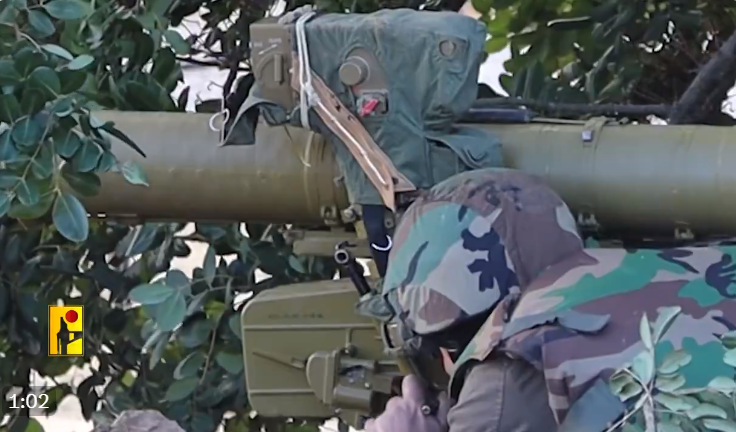
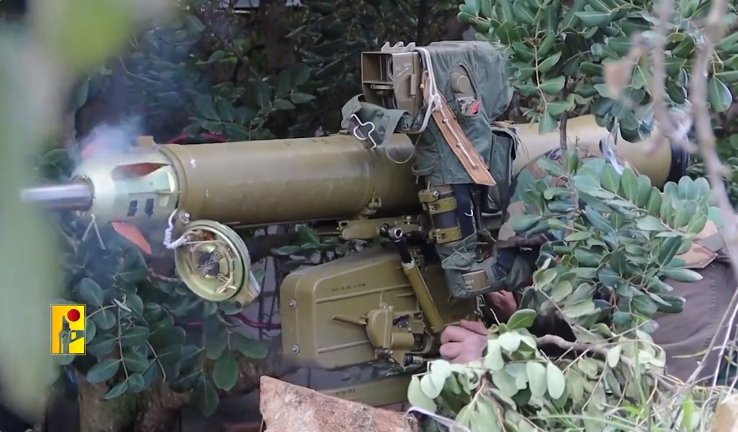
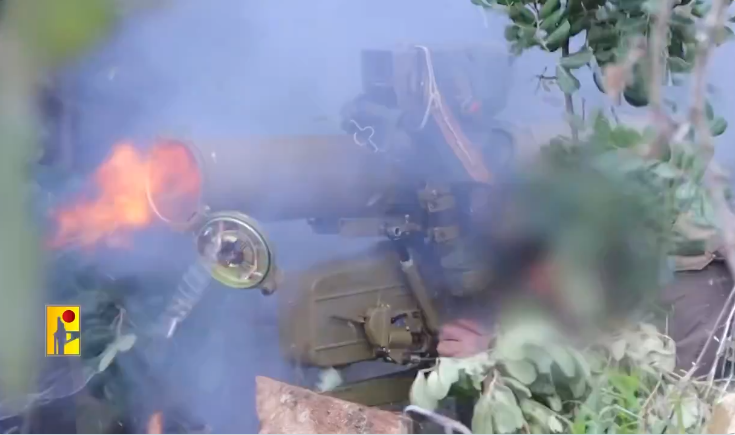
In the first generation, the operator must retain control of the rocket, from the time the missile is fired until the time of impact, holding the position of the sight in relation to the target, the location of the missile itself and physically monitoring the location of the target. In the second generation, the operator must retain control of the position of the sight in relation to the target and physically track the position of the target. In the second generation, there is no need to control the bearings of the missile during its flight.
Hezbollah uses several common types of first- and second-generation missiles:
Sagger – up to 3000 meters. First generation – manual guidance by means of a wire.
Fagot – up to 2500 meters. Second generation – wire-driven.
Metis – up to 1000 meters. Second generation – wire-guided (the ability to launch from closed spaces due to two-stage operation, the engine starts its combustion after the missile has been launched by an initial start-up).
Milan – up to 3000 meters. Second generation – wire-driven.
Kornet – up to 5500 meters (improved to 8000 meters) Second generation laser beam riding guidance system (wireless).
Third generation – anti-tank missile of the “Almas type”:
Apparently an Iranian version of the Israeli spike missile. Has a range of up to 10 kilometers using the “fire and forget” method. A ballistic movement towards the target (hit from above) and not necessarily vertically. A camera that transmits backward while flying. With this type of rocket, the operator completes his duty when, at the outset of the firing process, he fixes the sight on the target and pulls the launch trigger.
The working assumption is that the Iranians transferred Iranian-made third-generation missiles to Hezbollah. Iran’s anti-tank missile industry is a developed industry based mainly on reverse engineering. Most of the missiles mentioned above and those that were not mentioned (such as the American TOW, for example, or the Israeli Spike, which attacks its target from above rather than from the side), are Iranian manufactured through reverse engineering.
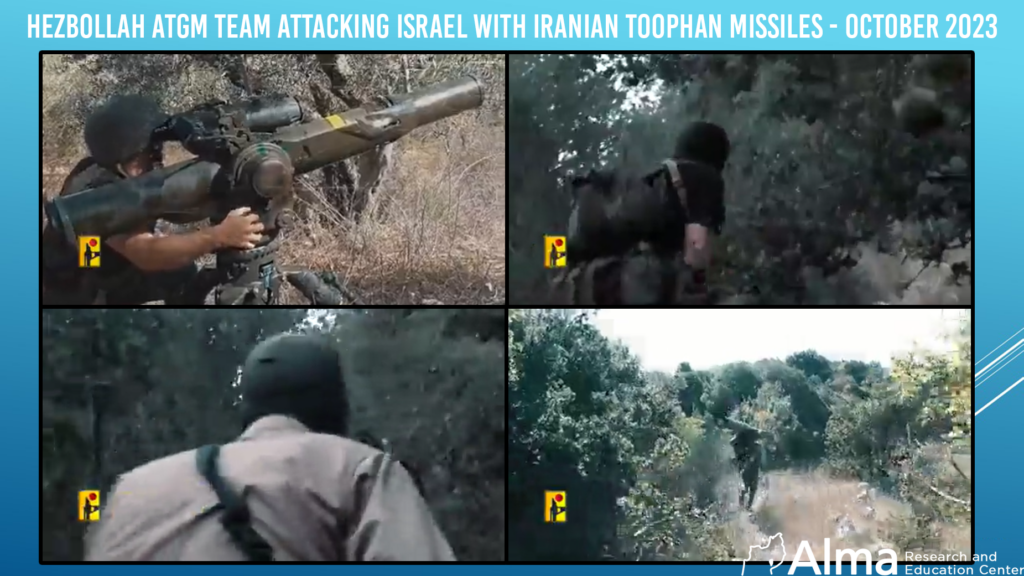
In the current conflict, Hezbollah uses these missiles to attack light vehicles, tanks, armored personnel carriers, positions, and even IDF communications and observation devices, all of which are deployed along the border on outposts, positions, and bases.
During the current conflict, Hezbollah also uses anti-tank missiles to hit civilian vehicles, causing casualties. Hezbollah also fired anti-tank missiles at civilian structures in Israeli communities near the border, since the buildings were empty and evacuated in advance, there were no casualties but extensive damage was caused to the houses.
It is important to note that recently we have noticed Hezbollah’s change in tactics, i.e., from firing anti-tank missiles from open areas to anti-tank fire from within the villages, near houses, or even from within them. When it is reported that a building in a Lebanese village near the border was attacked and hit by the IDF, it is highly likely that an anti-tank missile was fired from that structure or that it was attacked during the launching.
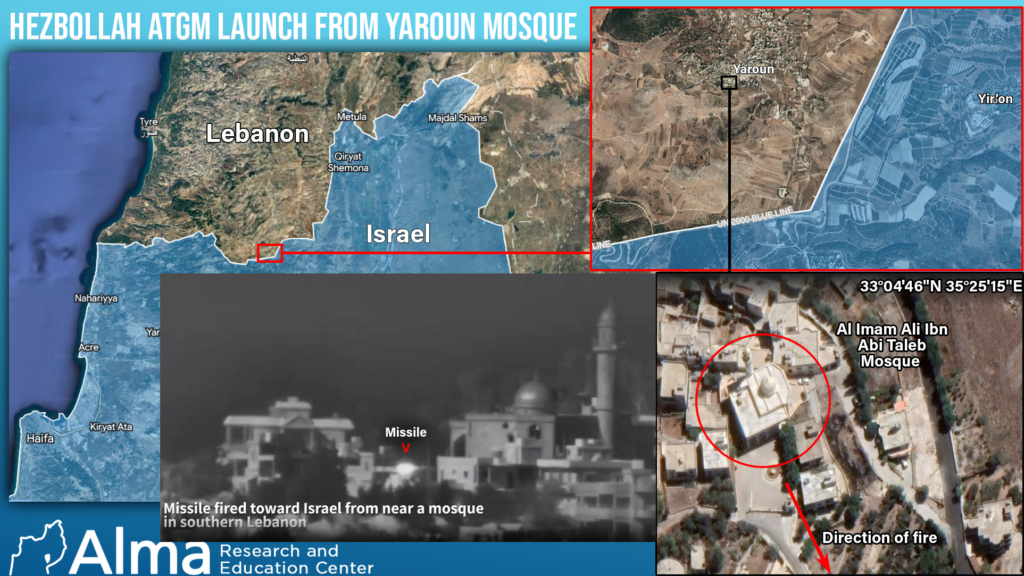
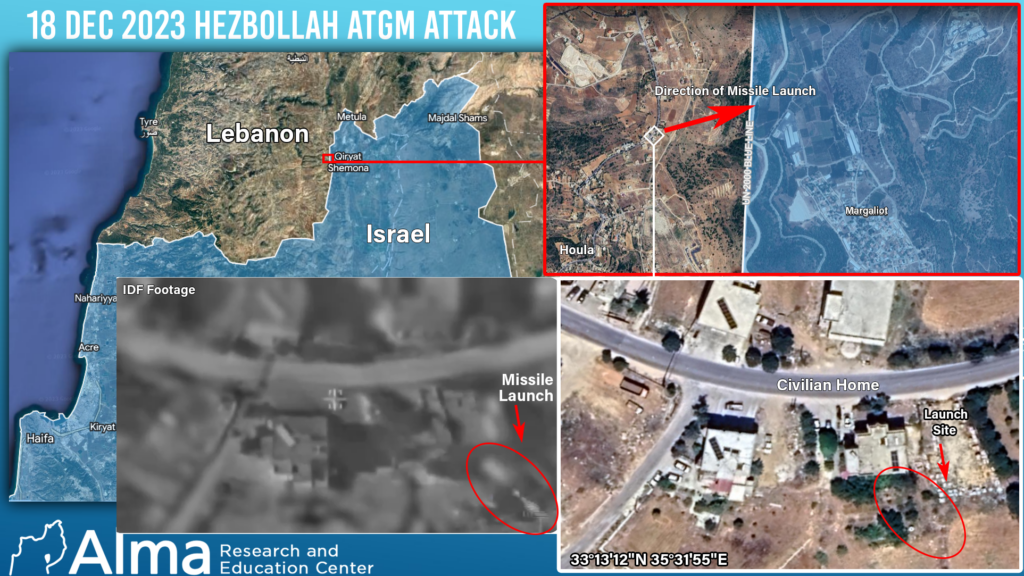
Anti-aircraft:
Since October 8, Hezbollah has been attempting to intercept Israeli UAVs with anti-aircraft missiles. We are aware of at least six incidents in which Hezbollah attempted to intercept Israeli UAVs.
It is highly likely that the missiles used by Hezbollah, at least in some of the interception attempts, were an electro-optical missile called the 358. It is possible that even in one interception attempt, the missile struck an Israeli UAV but failed to shoot it down. The missile is also known as the SA67. It is an advanced Iranian surface-to-air missile unveiled by Iran in 2019. Its range is up to 100 kilometers and is intended mainly for non-fast targets such as UAVs or helicopters.
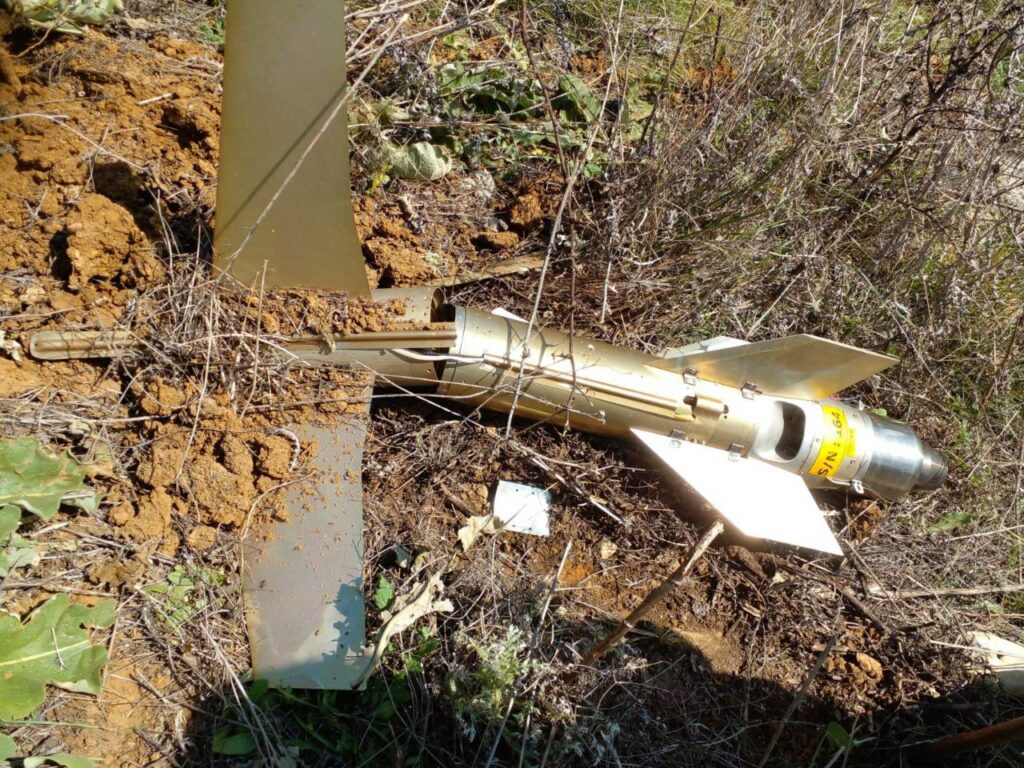
Above: Hezbollah Missile 358, which was fired at an Israeli UAV and landed in Lebanese territory.
It should be remembered that Hezbollah also has anti-aircraft systems of several well-known and veteran types of Russian-made shoulder-fired Strella missiles (also called SA 7) or shoulder-fired Igla missiles (also called SA 16 or SA 18, depending on the missile version). It is also possible that Hezbollah received American-made shoulder-fired Stinger missiles.
On October 31, 2019, Hezbollah fired an anti-aircraft missile at an IDF UAV carrying out a mission over the city of Nabatiyeh in southern Lebanon. The missile missed its target and the UAV was not hit. The Russian website Avia Pro reported that the missile was a Russian SA-8 anti-aircraft missile and that such missiles arrived in Hezbollah hands from Syria. A missile system of this type is carried on a designated military vehicle and is also called “Osa”. It should be noted that it is very likely that Hezbollah has also received more advanced air defense systems such as SA 17 and SA 22, which are also carried by vehicles (caterpillar/truck).
It is also likely that these missiles were relocated from the Bekaa region, where we believe they were stationed, to the South Lebanon region and positioned in appropriate locations that can conceal them due to their relative size. If indeed batteries of this type were moved to southern Lebanon, At this time, we don’t know if they were put to use.

